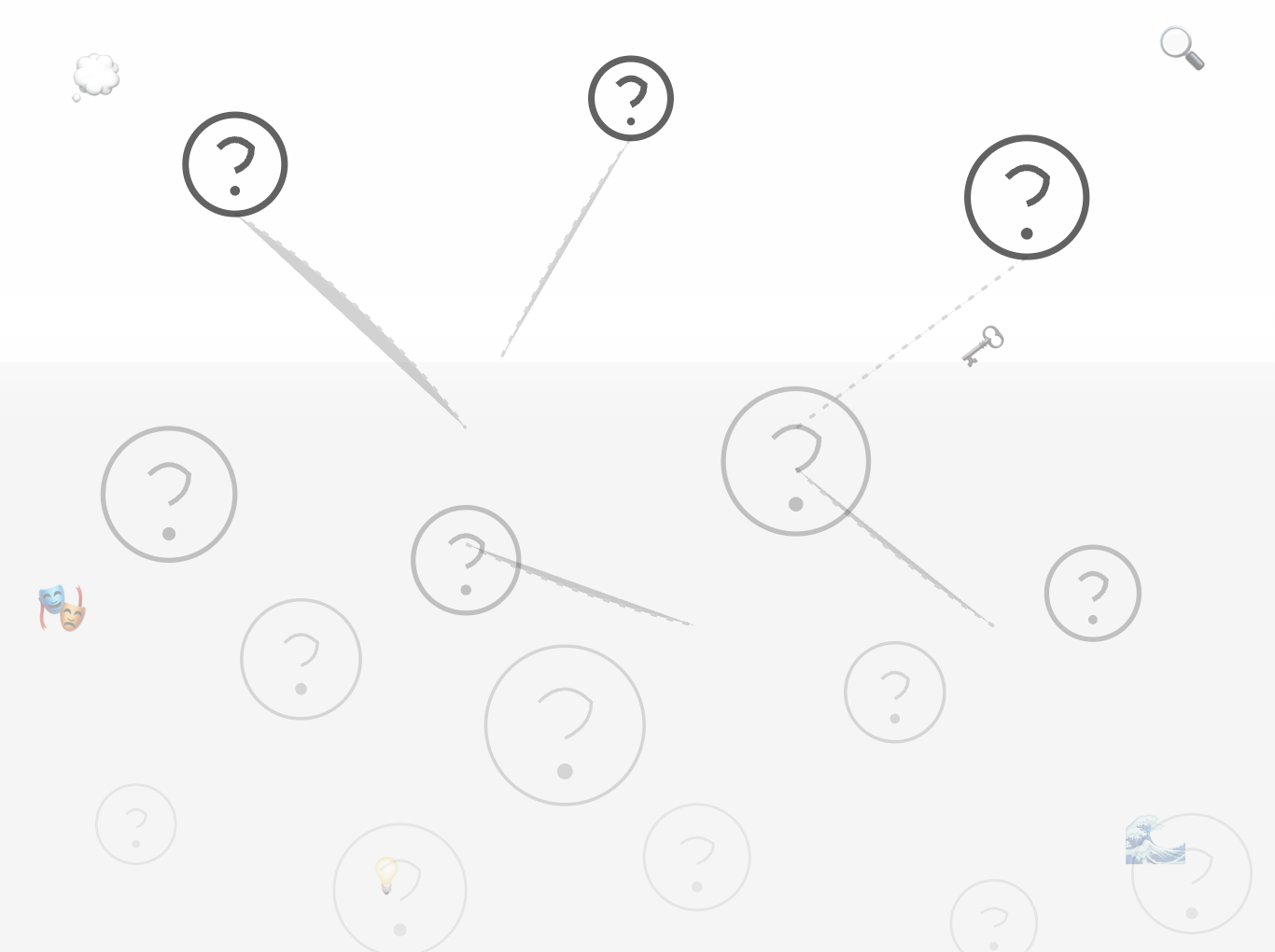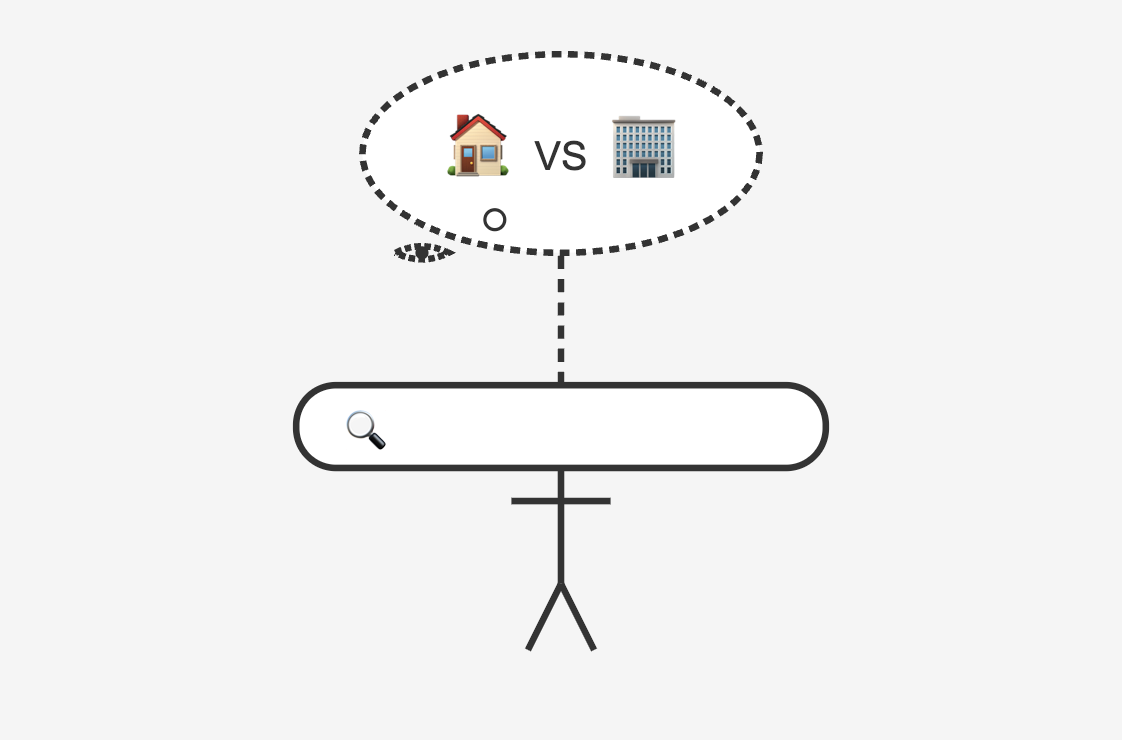WTF are Latent Comparisons? (Free Generator)

Search intent has always been the #1 consideration for writers and editors who want to get visibility for their content.
I caught the phrase "latent comparisons" in the excellent AI Notebook newsletter. I think it's an important and useful concept that lets us think more deeply about search intent.
In AI Notebook, Steve Toth recommended adding a new section to content briefs:
Top 5 latent comparisons
3 persona-specific twists (“for freelancers”, “for EU importers”)
I work with content briefs and outlines every day. I really wanted to dive into this and understand the "why", and that's what I'll share here.
I also created 2 free content tools you can try as you read!
Let's start with a more familiar topic: latent questions. Then we'll expand that to understand latent comparisons.
What are latent questions?
Try my free latent questions generator here:
Latent questions are the hidden questions behind a search query.
For example, if someone searches for "Dropbox vs Google Drive", we know that the user is thinking about signing up to one of these platforms.
But there's a hidden layer of intent behind that.

If someone searches for one storage platform vs another, they're likely thinking:
- How much do these tools cost?
- Can I use them in a team?
- Can I use them to back up my computer?
These are latent questions.
In an old blog post (now deleted) Google described this as the "need beneath".
To find these questions, we need to think about the thought process that brought the searcher to this point.
When this searcher typed their query into a search engine, we got a snapshot of what they were thinking at that moment. Latent questions help us to draw out the timeline to understand what they were thinking before.
That's why the best writers and editors look for opportunities to answer questions that haven't been asked.
AI search engines conduct latent synthetic queries. Latent synthetic queries are essentially latent questions that the search engine creates by itself.
We need to remember every time we create something new. We have to learn how to think about questions, not keywords.
I explained this to set us up for what we're really here for: latent comparisons.
What are latent comparisons?
Try my free latent comparisons generator here:
A latent comparison is a hidden or implied comparison behind a search query.
Just like latent questions are hidden questions, latent comparisons are the 'micro comparisons' beneath the surface.

To understand this, let's think about the query "McDonald's vs Burger King".
If I search for this, what do I really want to compare?
Maybe I want to compare things like:
- Price of a typical burger at McDonald's vs price of a typical burger at Burger King
- Quality of the food at McDonald's vs quality of the food at Burger King
- Ease of ordering at McDonald's vs ease of ordering at Burger King
These comparisons are deeper than A vs B. They come from someone's lifestyle, budget, location, and taste: all things that are personal to them.
This comes back to the second part of Steve's recommendation:
Top 5 latent comparisons
3 persona-specific twists (“for freelancers”, “for EU importers”)
Focusing on the persona-specific queries will help you to address questions based on individual needs.
You can also think of it this way. For each persona:
- What constraints might the searcher have? (Budget, location, dietary requirements)
- What is their goal? (Convenience, best quality, lowest price, healthiest choice)
Constraints and goals go beyond basic keyword research. That's why latent comparisons are just as important as latent questions: they reveal deeper layers of intent that are hidden from us until we start to get inside the searcher's head.
Let's complete the set with one more explanation: explicit comparisons.
What are explicit comparisons?
An explicit comparison is a direct comparison, clearly stated.
Often, but not always, they will be statements of fact.

Going back to our fast food query, explicit comparisons would be things like:
- McDonald's has more restaurants than Burger King
- The Big Mac is cheaper than the Whopper
In these statements, we're saying exactly what is different and which way the balance is tipped.
Of the three concepts I've mentioned, explicit comparisons are the easiest to include in content. And it's important we include them.
But they don't explore pros and cons. They don't tap into the priorities specific to each persona, so we can't rely on them on their own. They don't really create space for a decision to be made.
The best content includes a combination of explicit statements, latent comparisons, and questions that are in the searcher's mind.
Why include latent comparisons in content briefs?
Latent comparisons provide the information searchers need to make a decision.
To recap:
- Explicit comparisons: facts
- Latent comparisons: hidden priorities
- Latent questions: hidden concerns
People who search in an AI tool are not looking for a list of features or technical specifications (explicit information).
They're trying to understand which tool is going to solve their problem, and that involves a choice.
Latent comparisons help you to:
- Answer the real question beneath the surface. This is classic search intent: getting into the head of the searcher and understanding their motivation.
- Cover the topic in more detail. Latent comparisons naturally add depth to a topic and help you to map out your outline or brief. This helps you to establish topical authority.
- Aid content chunking. AI search engines look at passages, not pages. If you structure content for AI consumption and include different latent comparisons, separated by headings, you're answering hidden questions in a format that an LLM can easily digest.
- Achieve a conversion... because a conversion is a decision that goes in your favor.
This is why content writers talk about benefits, not features. Leave the features for the docs team!
How to use latent comparisons
The framework of explicit comparisons, latent comparisons, and latent questions comes together best when you apply it to a brief.
This sets up the piece to cover all 3 aspects.
It also helps to shift content briefs away from keyword-first thinking, towards the new challenges of AI search and LLM optimization.
Instead of thinking about primary and secondary keywords, start your brief with decisions to be made.
As you're developing your brief, try this prompt:
I'm writing content about [keyword]. Help me identify:
1. 5 latent questions - the hidden questions people have when they search for this, even though they don't explicitly ask them
2. 5 latent comparisons - the deeper, implied comparisons or trade-offs people are really weighing when they search for this topic
3. 5 explicit comparisons - the direct, factual comparisons that are clearly stated and obvious
For each category, provide 3 persona-specific variations (e.g., "for small business owners," "for enterprise teams," "for freelancers").
Explain why these would matter to each persona and what decision-making process they reveal.
Here's a snapshot of the latent comparisons provided by ChatGPT (using 4o).

Not all of these suggestions will be impactful. I recommend that you:
- Focus on concerns and pain points first
- Emphasize the value that your client brings compared to the alternative (not the features)
- Use explicit comparisons where you can clearly (and authentically) state that one product is better than another, based on your own real-world testing.



Comments ()